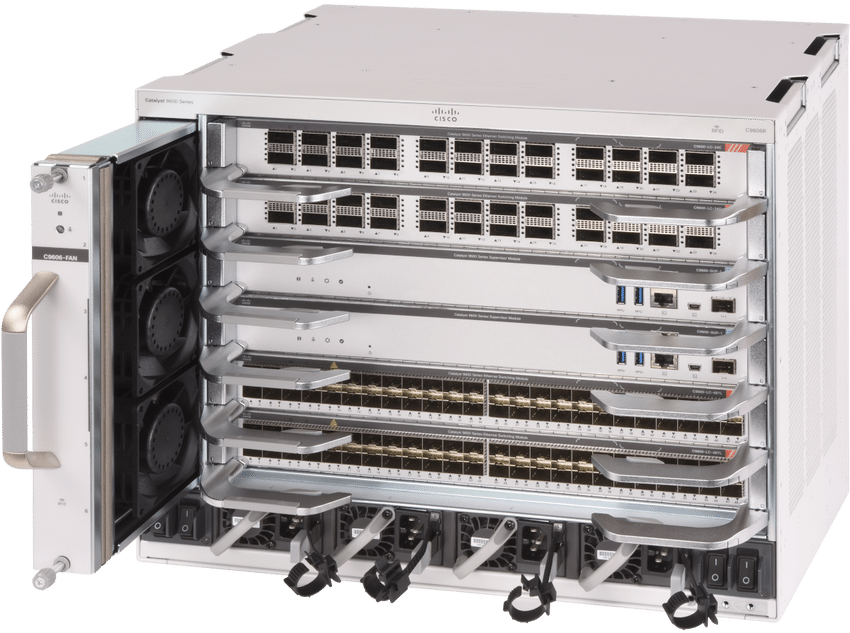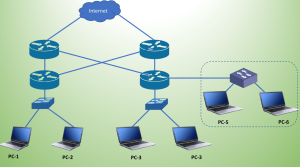Physical and Logical Addresses
A person’s name is typically a constant identifier, much like a MAC address in computer networking. A MAC address is a unique, hardware-based identifier assigned to a network interface card (NIC) and remains unchanged regardless of where the host is connected on the network. It serves as the host’s physical address, much like a person’s name is a constant identifier.
On the other hand, a person’s address represents their physical location, which can change over time. Similarly, in networking, the IP address is used to designate the logical location of a host on a network. Unlike the MAC address, the IP address is assigned logically and can be changed as needed. Network administrators assign IP addresses based on the host’s current location within the network, much like a person’s address changes when they move to a new place.
IP addresses have two main parts: the network and host portions. The network portion of the IP address is the same for all hosts within the same local network, just as the general location (city or street) in a person’s address remains the same for all houses in a neighborhood. The host portion of the IP address is unique to each device within that local network, allowing specific identification of individual hosts within the same network.
Both MAC and IP addresses are essential for a computer to communicate within a hierarchical network. The MAC address serves as a constant, physical identifier, similar to a person’s name, while the IP address represents the logical network location, similar to a person’s address. Just as both a person’s name and address are necessary to send a letter, both MAC and IP addresses are required for effective communication on a network.
Hierarchical Analogy
Imagine the difficult challenges of communication if the sole means of transmitting a missive to an individual were utilizing the recipient’s appellation. In the absence of streets, urban centers, hamlets, or national demarcations, conveying correspondence to a particular individual residing in the far reaches of the globe would become a task of extraordinary complexity.
The host MAC address can be likened to a person’s name on an Ethernet network. A MAC address serves as the distinct identifier of an individual host, yet it remains silent about the host’s network location. If all the numberless residents of the internet were to be identified solely by their unique MAC addresses, imagine the difficulty of pinpointing a solitary entity.
Furthermore, Ethernet technology produces large amounts of broadcast traffic to facilitate host-to-host communication. These transmissions are directed to the entire grouping of hosts within a given network, leading to the depletion of bandwidth and an associated lessening of network performance. One must anticipate the consequences if the internet’s countless hosts were conglomerated into a singular Ethernet network relying on broadcasts.
For these dual rationales, expansive Ethernet networks encompassing an overabundance of hosts prove inefficient. A more judicious approach involves segmenting these extensive networks into smaller, more manageable constituents, which can be achieved by adopting a hierarchical design model.
Access, Distribution, and Core
Access
The foundational layer, the “Access Layer,” is the joint for end-user devices to interface with the network. This layer facilitates the interconnection of multiple hosts, enabling seamless communication among them. This connection is typically achieved through the utilization of network devices, such as the Cisco 2960-XR switch, as illustrated in the accompanying diagram, or through the deployment of a wireless access point. It is imperative to note that all devices residing within a singular layer share identical network segments in their respective IP addresses.
If a message is designated for a local host, determined by the network segment of the IP address, the message remains limited within the local domain. However, should the message be directed toward a disparate network, it is routed to the “Distribution Layer.” In this context, switches serve as the pivotal link to the distribution layer devices, typically represented by Layer 3 entities, such as routers or Layer 3 switches, exemplified by the Cisco 2960-XR.

Distribution
The distribution layer serves as a nexus for distinct networks, arranging data transmission between them. It often houses more robust switches, exemplified by the Cisco C9300 series depicted in the illustration, and routers for network interconnection. Devices at the distribution layer govern the nature and volume of traffic traversing from the access layer to the core layer.
Cisco C9300 Series

Core
The core layer comprises a high-velocity backbone layer that is able to have alternative (backup) linkages. Its primary function is conveying considerable information among numerous terminal networks. Devices at the core level generally encompass difficult, speedy switches and routers, as illustrated by the Cisco Catalyst 9600. The principal objective of the core layer is the expeditious transmission of data.


